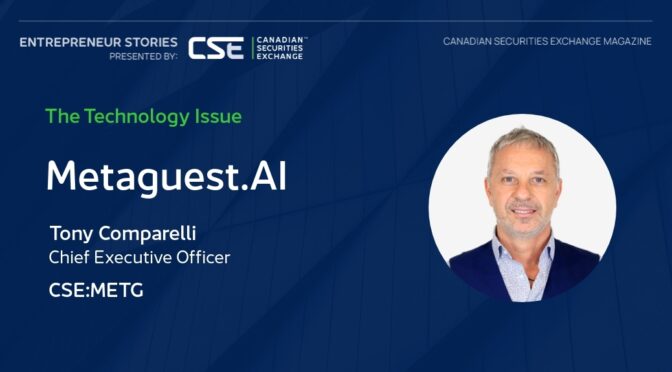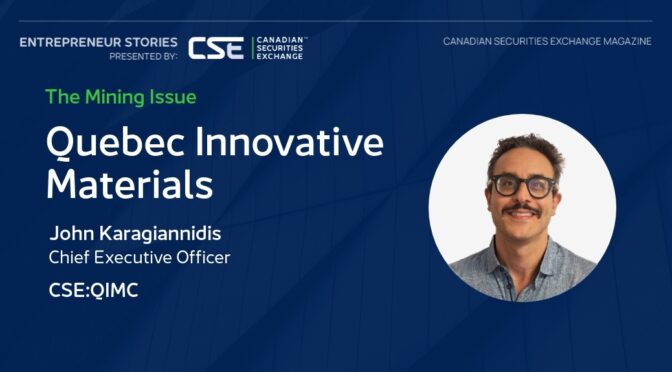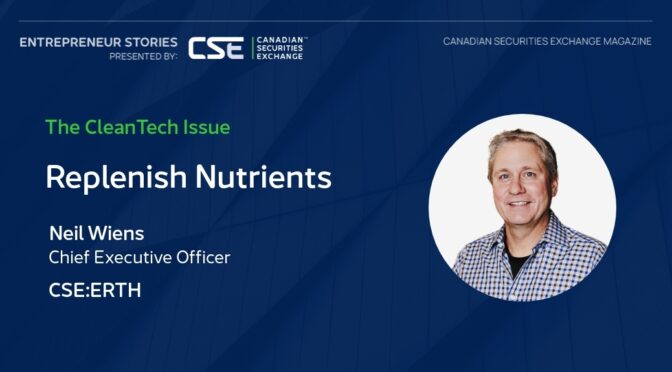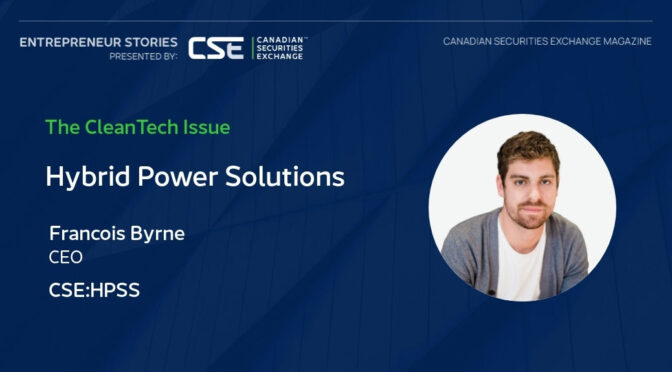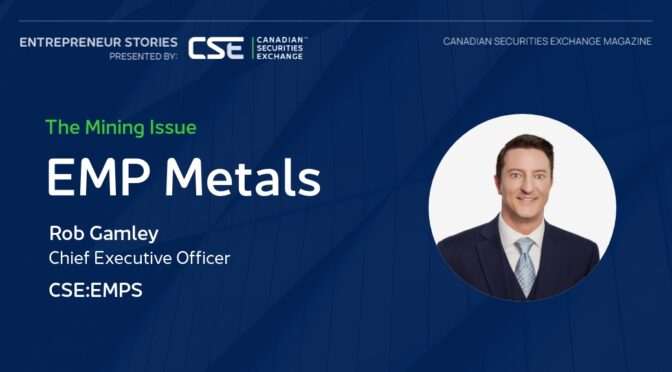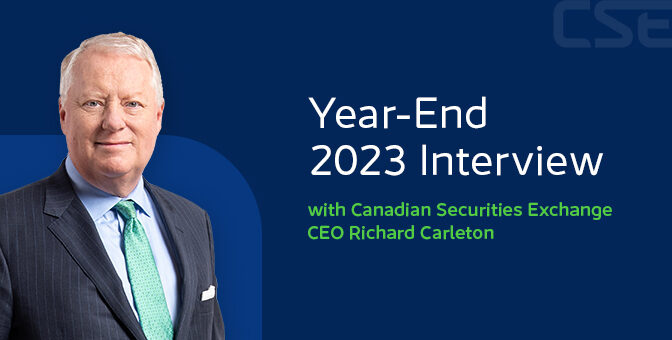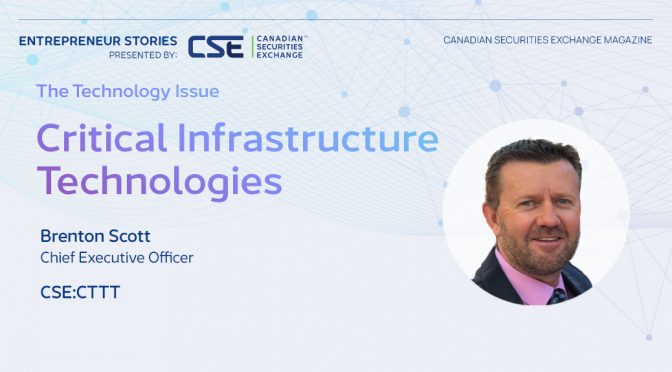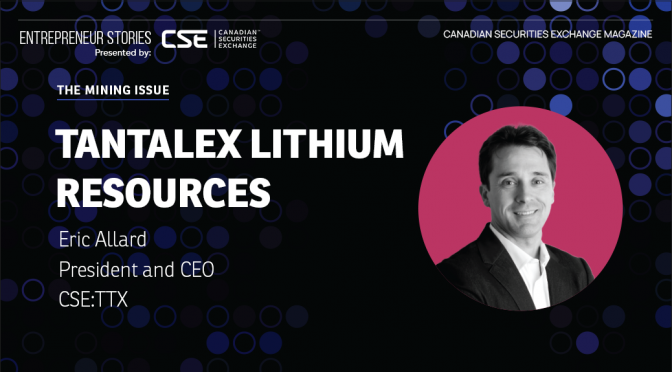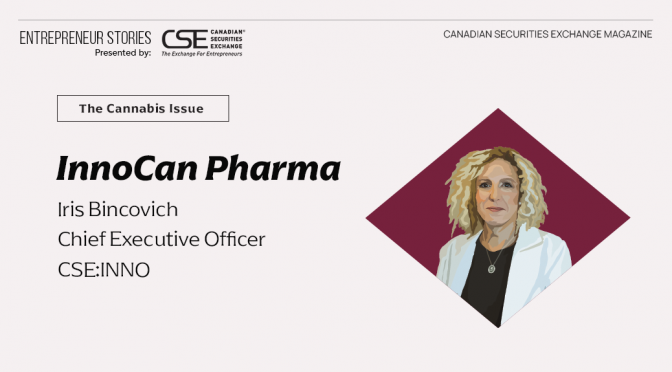It was a tale of two stock markets in 2023, with large-cap indices nearing record highs, while the shares of smaller companies struggled to find steady footing. Ongoing geopolitical uncertainty didn’t help, but if one had to name a single factor explaining the divergent performance, most observers would point to interest rates, which have surged manyfold from their pandemic trough that ended in the latter half of 2021.
History suggests that small-cap companies will again have their day in the sun. Reasons for optimism include expectations for a softening interest rate environment and the undeniable global trend toward greater electrification, which will continue to present opportunities to companies of all sizes. As is always the case with financial markets, timing is the hardest thing to predict.
Through all of this, the Canadian Securities Exchange maintained steady growth in its issuer base in 2023, while also introducing important changes to listings policies, margin eligibility, and its visual brand.
In a late-November discussion, CSE Chief Executive Officer Richard Carleton offered his perspective on markets at home and abroad, as well as his outlook for 2024, as the Exchange gets ready to mark a particularly important milestone.
Every year is different for the capital markets and in 2023 it was the interest rate environment that took centre stage. How would you characterize the capital markets in 2023 based on your interaction with issuers and others in the financial community?
It’s a tricky question and my initial reaction is that it was unprecedented, difficult, and a little strange — these are the words that come to mind. The first big issue is a lack of trading activity in all of Canada’s public markets, but particularly in the junior capital markets. The last time we saw turnover levels this low was 10 years ago. It has been a significant decline given that we were at record levels only two years ago, which was the height of the pandemic. To see declines in overall trading activity on the order of 70% to 80% is something that in my career, which dates back some 35 years in the capital markets, is unprecedented.
I think it’s fair to say that the interest rate environment and the overall economy is likely the culprit. As we know, retail investor participation is very important, particularly for the junior capital side of the markets, and there is a lot of pressure on Canadian families from an inflation perspective, housing costs, mortgage renewals, and so on. So, I think we are seeing that decrease in activity as a result.
That said, there are reasons for tremendous optimism because we have had many new companies access public capital through the Canadian Securities Exchange over the course of the year. We are not at the record levels we saw in 2021 or 2022 in terms of new companies coming to market, but we are still going to see roughly 100 companies list in 2023, which is extraordinary growth.
There has been a significant shift in the nature of those companies. In the last couple of years, we have seen a lot of investment in battery, strategic, and critical minerals, which are principally lithium, graphite, copper, nickel, cobalt, zinc, and rare earth elements.
This obviously takes place in anticipation that as the economy further electrifies and we bring new battery plants into production, there will be considerable demand for all of these minerals. Given the lack of new capacity brought on line for these minerals over the past 20 or 30 years, the belief is that there is a tremendous opportunity for Canadian companies, whether they are mining in Canada or internationally, to fill that demand.
So, as I say, we are in this kind of strange situation where we have a very robust listings pipeline and new listings cohort from 2023, but at the same time, we see participation rates and asset valuation levels that are disappointing and somewhat frustrating for company management teams.
You just described a year that had as many challenges as opportunities, yet the CSE is on pace for an impressive number of new listings across a wide variety of business sectors. What enabled the CSE to perform so well?
We attract the majority of new companies coming into Canada’s public marketplace at this time. There are a number of reasons for this, but I think that the most important factor is the excellent working relationship our listings regulation team has built up over the years with entrepreneurs and their legal, accounting, and investment banking advisors.
People feel very comfortable working with the team, and I believe there is also an appreciation for the opportunities we provide through our listings development group to help showcase the unique stories of our issuers to a marketplace that, as I say, is challenging at the moment. So, it’s really both as the company lists on the CSE, and then as they look to grow in part through a relationship with the CSE, that we have an opportunity to help our issuers achieve their goals.
The CSE underwent a significant visual rebrand in 2023 that brought with it a new slogan: Always Invested. Why was now the right time and what does the refreshed brand represent?
I’d say there are two things. The first is that we have been involved with our partners at the securities commissions on a rebuild of our listings policies, really for the first time in the 20-year existence of the organization. There are significant changes to both tighten up the requirements for all companies listed on the exchange, as well as the creation of a senior tier which will enable us to regulate larger, more mature companies on a similar basis as they would be on larger exchanges in North America.
With that was really the recognition that we have moved past the start-up phase and are now a material part of Canada’s public markets. The visual identity of the brand is meant to convey our evolution. The logo is bold with forward momentum, it represents stability and, to a smaller degree, modernization and disruption.
The slogan “Always Invested” is a promise to our customers and partners. A promise that we will always be invested in quality service and the future of efficient public capital markets.
Was the decision to look at the listings policies mostly an internal one or did the broader financial community influence it as well?
The drive to update the listings policies came from a number of sources. We had feedback from the entrepreneurial, legal, and audit communities in terms of where our policies should be headed. And we work very closely with the regulators in terms of supporting investor protection and promoting capital formation and liquid markets through availability of information on companies.
We concluded that we could do a number of things to update the approach we have taken from when the listings manual was first drafted in 2003. So, with the benefit of 20 years of experience and feedback from various stakeholders, it was time to make significant changes.
The CSE will reach its 20th year as a recognized exchange in May 2024. You must already be planning a celebration of this milestone. What is in store and what can issuers and investors expect from the CSE in the next 20 years?
The first question is the easiest in that we are certainly looking to mark the event, but in ways that are sensitive to the difficult financing conditions many of our issuers are finding. Of course, times are challenging also for the investment dealers who we work with on the corporate finance and trading sides. So, I wouldn’t expect anything too over the top, but it is important that we celebrate the milestone because it is significant.
I like to tell entrepreneurs when they are considering working with the CSE that we are an exchange that has experienced many of the same challenges and triumphs as a company that they are going through: we were a start-up that initially struggled to find an audience for its services, went through multiple pivots as we looked to find our way in an intensely competitive market, had to raise capital during very difficult market conditions but ultimately succeeded by never losing sight of our goal, which is to build a great exchange. We will be celebrating these achievements next year as we reach our 20th year as an exchange.
As for the next 20 years, that’s a really good question. There has been a lot of criticism of traditional finance models from our peers in the crypto world: they are looking to decentralize trading facilities and disintermediation of service providers like traditional brokers, custodians, clearing agencies, and the like. From my perspective, the system we collectively operate for access to trading and capital through the traditional stock market environment has evolved to respond to a series of challenges over many years. It is actually very robust.
All of the systems and processes that had to be re-invented for crypto trading are already deeply baked into the investor protection and business processes that we have in what they call the legacy or “centralized finance” world, as the crypto community sometimes refers to it.
My point is that the exchange trading environment is likely to look an awful lot like it does now, with more technology applications eliminating the remaining manual processes from the trading world, and facilitating the availability of better and more timely information for investors.
A visit to Australia earlier in the year brought the opportunity for new perspective on a capital market that is often compared to Canada’s. What can you tell us about the market there and the ambitions of the local financial community?
What’s interesting is that before we left for Australia, and since we returned, I saw articles in the Canadian business press suggesting that Australia is eating Canada’s lunch when it comes to embracing and supporting the new generation of companies in the strategic minerals space. When we were in Australia, we saw opinions expressed in the local financial press that Canada was eating Australia’s lunch when it came to supporting the investment and development of companies in the strategic minerals space. I’m not sure who is right or wrong, but clearly there is a difference of opinion on the point!
It’s clear that Canadian mining companies have been looking for capital from the Australian market. It appears that there are a number of Australian funds that are prepared to invest in relatively early-stage exploration companies, and also that companies from the CSE, and Canada in general, have had some success in raising capital from Australian investors.
The window seems very tight for raising additional money here in Canada so when a couple of Canadian companies had success in Australia, others followed that lead and attempted to replicate their experience.
From our perspective, we are looking to remove as many barriers and costs as we can for companies on the CSE to raising capital in Australia, and will support CSE-listed issuers seeking admission to the ASX in any way that we can.
Staying with the mining theme, can you share your thoughts with us on the sector’s outlook for 2024?
It is clear that good projects across a wide range of potential minerals are getting funding and entering the public markets. They are able to raise that first round of investment to support the first phase of exploration.
The new issuers from 2021 and 2022 that now have a season of drilling under their belts have been generating some positive reports. Normally, you would expect to see positive price performance, but for some reason, we are not seeing it. As a result, when companies raise their second round, the funding is dilutive for their original investors because the transaction is conducted at the previous issue price, or even lower for some of them.
This is a challenge and a source of some frustration for the industry. That said, we continue to see good projects come to the CSE and there is an extensive pipeline of companies preparing to come to market in 2024.
I hope and expect that with a return to more normal levels of retail participation as interest rates begin to come down in 2024, which I think is a near certainty, you will see the cycle happen where the management teams that successfully advance projects are rewarded with better market valuations and are able to raise significant additional funds at higher prices.
The cannabis sector has gone through some adjustment of late. What has been the CSE’s experience and have you had any feedback from cannabis issuers that stands out in your mind?
Cannabis issuers in many respects are very similar to those in the mining sector right now in that there is a degree of frustration from company management over lack of support in the secondary market as far as asset valuation goes.
We have a number of companies listed on the CSE which continue to build market share in the United States, and there continue to be new states that legalize for adult recreational purposes, which opens up new markets for these companies.
But it appears that the investment community is focused on legislative progress toward either rescheduling of cannabis from a Schedule I to a Schedule III substance, which could result in significant tax relief for companies in the United States, or toward some form of outright legalization for adult recreational purposes on the Federal level.
As a result of these challenges with their equity market valuation, many of the larger companies are raising debt capital by either mortgaging tangible assets or securing lines of credit through the significant cash flow a few of these larger companies are generating. It is a very challenging time for these companies and my hope is that we begin to see more institutional participation and more long-term investors with a sophisticated understanding of the prospects and outlook for these companies. That should create the conditions for better price performance that recognizes the progress that many of them have made over the last five years.
In June, CSE issuers became eligible for margin following a decision by the Canadian Investment Regulatory Organization. How have issuers benefited since that decision was made?
It’s a benefit that flows to the investment dealers when they hold CSE securities in their own names on an overnight basis. The changes mean that, for eligible securities, they don’t have to take 100 cents on the dollar as a capital hit and will see significant reductions on that charge against their firm’s regulatory capital.
I know that sounds like deep inside baseball, but the practical benefit for an issuer is that it can significantly decrease the dealer’s cost of conducting an offering on behalf of the issuer. For many of these companies, the dealer will hold the stock in its inventory for a significant period of time. It is very expensive if they are tying up regulatory capital to hold that position.
This change should, and will, facilitate a lower cost of capital for CSE issuers.
It is always up to the investment dealer to determine if they will permit a client to hold a security in a margin account; the regulatory change does not mean that CSE securities will become eligible for margin accounts. Investors will have to ask their dealer about the issue.
We took a 20-year look forward earlier in the discussion. Let’s shorten the timeline and conclude with your thoughts on what the CSE plans to achieve in 2024.
We’re deep in the planning stages of our forecast, our budget, and the strategic plan for 2024, and there are a few things I would highlight.
We saw tremendous growth in our staff complement in 2023 as we powered up to service our ever-growing issuer population and to administer many of the new listings policies implemented over the course of the year. We should be quiet on the “new hires” front in 2024.
There will be demand for new capital from the mining companies, in particular, who joined the Exchange over the last three years. The CSE will do what we can to assist these companies in reaching sources of capital in Canada, the U.S., and overseas. We’ve talked in past years about the preferred access Canadian public companies have to the U.S. capital markets; I believe that the U.S. could be an important source of capital for the CSE’s mining issuers in the coming years. We also want to work with the industry to assist them in any way we can to engage with a younger generation of investors looking to support the energy transition through their investment portfolios.
Overall, we are being quite conservative in our expectations for trading and new listings in the coming year. I personally believe that interest rates will come down sooner and faster than the broader consensus, but that probably isn’t a sound basis for us to be doing our financial planning for the year! What I am certain of is that when rates do begin to come down, there will be more robust trading volumes across the markets. It is my hope that investors take the time to get to know the issuer classes of 2022 and 2023 a little better as they come back to the market.

